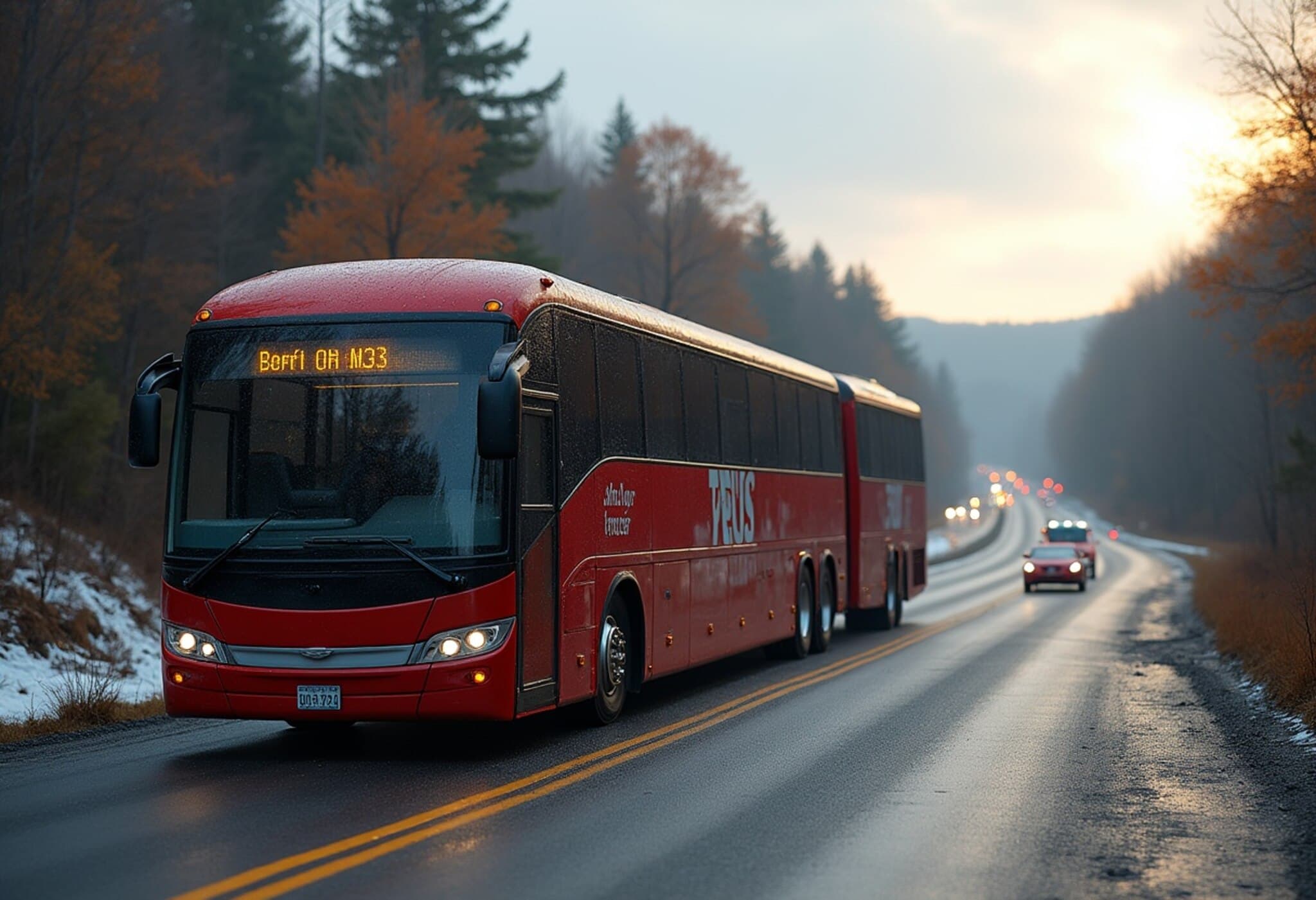Fatal Tour Bus Accident on New York State Thruway Leaves 5 Dead, Many Hurt
In a devastating incident on Friday, a tour bus carrying more than 50 passengers overturned on the New York State Thruway near Pembroke, upstate New York, resulting in the deaths of at least five individuals and injuring dozens more. The tragic crash has sent shockwaves through the local communities and reignited concerns about road safety standards for commercial passenger transport.
Details of the Accident
The bus, operated by M&Y Tour Inc., was en route back to New York City after a sightseeing trip to Niagara Falls. According to state police, the vehicle lost control on the eastbound lanes approximately 30 miles northeast of Buffalo and around 40 miles southeast of Niagara Falls.
State Trooper James O’Callaghan provided insight into the sequence of events: “For reasons still under investigation, the bus veered into the median, then over-corrected and ultimately overturned into a ditch.” Trooper O’Callaghan emphasized that the bus was traveling at full speed but did not collide with any other vehicle, ruling out a multi-vehicle collision.
Casualties and Passenger Demographics
The tragic accident claimed the lives of five passengers — all adults — from a total of 54 individuals onboard ranging in age from 1 to 74 years. Authorities have reported that the majority of the passengers were foreign nationals, primarily from India, China, and the Philippines, which highlights the diversity of travelers frequenting upstate New York’s famed tourist routes.
Emergency Response and Medical Treatment
Hospitals across Western New York mobilized quickly to treat the victims. Erie County Medical Center admitted 24 patients, including two who underwent surgery and two who remain in intensive care. Meanwhile, the University of Rochester Medical Center took in six patients, two of whom are in critical condition. Additional victims received treatment and were discharged from hospitals in Batavia. Several seriously injured individuals were airlifted by Mercy Flight to specialized facilities.
Investigation and Official Statements
State police officials have ruled out mechanical failure and driver impairment as causes of the crash. The driver, who is cooperating fully with investigators, has not been charged as the inquiry continues.
Erie County Executive Mark Poloncarz urged commuters to avoid local roads near the crash scene, as the highway was closed in both directions between exits 48A and 49 to facilitate emergency operations.
New York Governor Kathy Hochul expressed her condolences and assured the public that state agencies are working closely to coordinate rescue efforts and provide support to those affected: “We have been fully briefed on this tragic tour bus accident. Our priority is the swift and compassionate handling of this emergency.”
Contextual Insights: The Broader Road Safety Challenge
This heartbreaking incident underscores ongoing challenges in ensuring safety for large passenger vehicles like tour buses. While preliminary investigations have ruled out common causes such as mechanical failure or driver impairment, the dynamics of high-speed accidents on interstate highways often involve complex factors including road conditions, weather, vehicle maintenance, and human response under stress.
Experts emphasize that comprehensive safety protocols, including rigorous vehicle inspections, advanced driver training, and infrastructure improvements, remain crucial to reducing such tragedies. Moreover, the diversity of passengers on these tours calls for culturally sensitive emergency response preparedness and multilingual communication in crisis situations.
Legal and Policy Considerations
- Regulation compliance: Ensuring tour operators adhere strictly to federal and state transportation regulations is vital to passenger safety.
- Investigation transparency: Authorities must maintain transparent communication with the public to build trust following such catastrophic events.
- Support for victims: Beyond immediate medical care, policymakers need to advocate for psychosocial support and compensation for victims and their families.
Editor’s Note
This tragic bus accident lays bare the enduring vulnerability of road travel, even on well-traveled interstates. As the investigation unfolds, critical questions remain around the precise causes and preventive measures. How can regulatory frameworks evolve to prevent similar disasters? What role should community and government agencies play in supporting multilingual immigrant populations during such emergencies? This incident invites a deeper evaluation of transportation safety and communal responsibility on America’s roads.











